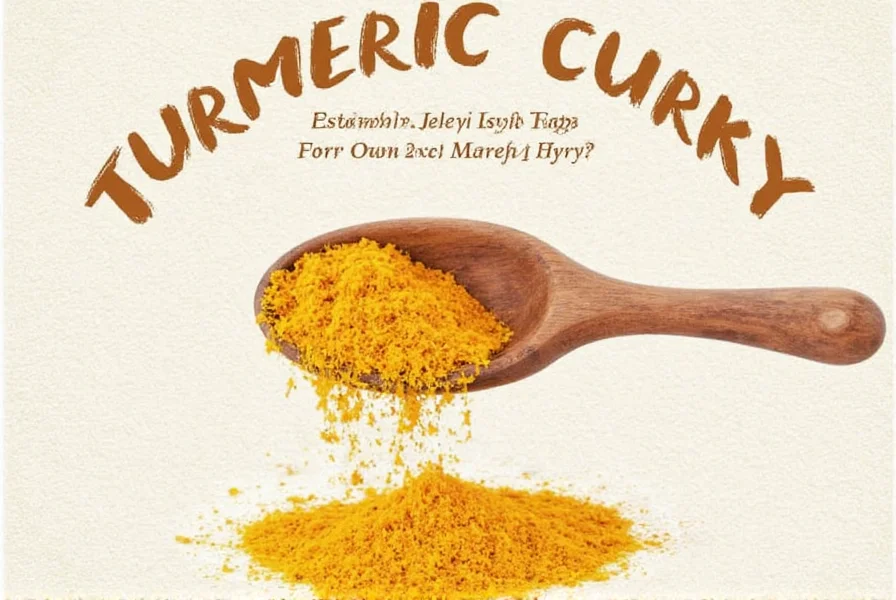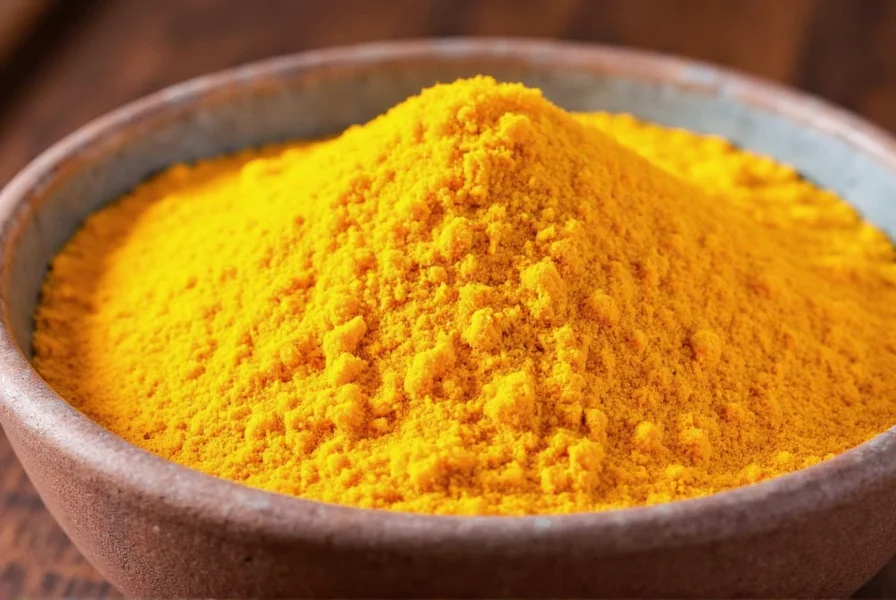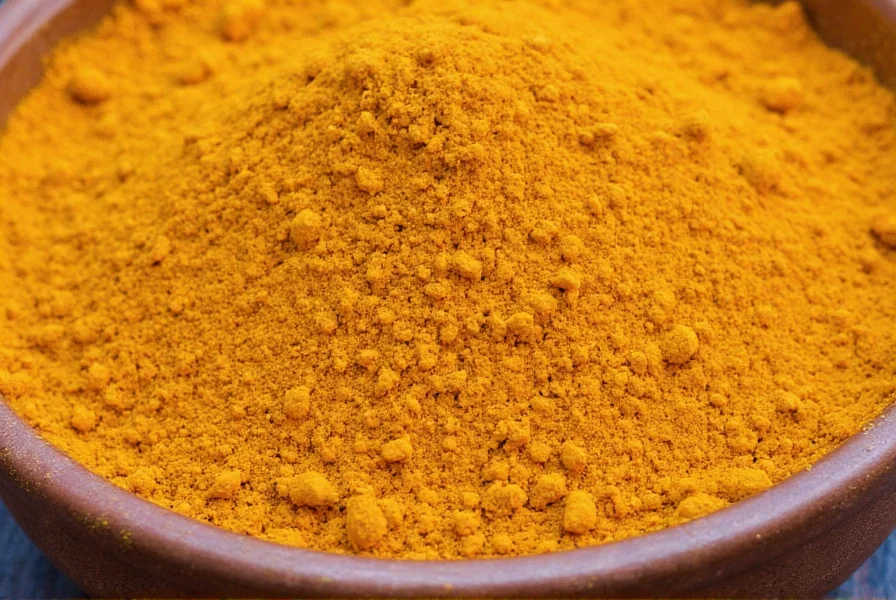Curry without turmeric is like tea without leaves—it simply wouldn't be the same vibrant, aromatic dish we know and love. This ancient spice has been the backbone of curry traditions across South Asia for millennia, transforming ordinary ingredients into complex, golden-hued masterpieces. Understanding how to properly use turmeric elevates your curry from good to extraordinary, while avoiding common pitfalls like bitterness or staining.
The Essential Role of Turmeric in Curry
Turmeric isn't just a coloring agent—it's the flavor foundation of most curry blends. The active compound curcumin delivers an earthy, slightly bitter profile that balances the heat of chilies and the sweetness of coconut milk. In traditional Indian garam masala and Thai curry pastes, turmeric provides the base note that allows other spices to shine.
Culturally, turmeric's golden hue symbolizes prosperity and purity in many South Asian traditions. This significance extends to culinary practices where the vibrant color indicates a properly prepared curry. When shopping for best turmeric for curry recipes, look for deep orange powder that leaves a vivid stain on your fingers—a sign of high curcumin content.

Fresh vs. Ground Turmeric: Which Works Best?
While ground turmeric offers convenience, fresh turmeric root provides a brighter, more complex flavor profile. Here's how they compare for curry preparation:
| Characteristic | Fresh Turmeric | Ground Turmeric |
|---|---|---|
| Flavor Profile | Bright, citrusy, peppery | Earthy, deeper, more bitter |
| Measurement Ratio | 1 inch fresh = 1 tsp ground | 1 tsp = standard measurement |
| Best Curry Types | Thai, Malaysian, fresh herb-based | Indian, robust stews, slow-cooked |
| Storage Life | 2-3 weeks refrigerated | 6-12 months in dark container |
For authentic how much turmeric for curry measurements, use 1/2 teaspoon ground turmeric per serving for mild curries, increasing to 1 teaspoon for robust dishes like vindaloo. Fresh turmeric requires triple the volume—1 inch of peeled root equals approximately 1 teaspoon grated.
Mastering Turmeric Technique in Curry Preparation
The timing of turmeric addition dramatically affects your curry's flavor. Unlike delicate herbs added at the end, turmeric benefits from when to add turmeric in curry early in the cooking process. When sautéed in oil with other whole spices (like mustard seeds and cumin), its flavors fully develop and integrate with the dish.
Professional chefs follow this sequence for optimal results:
- Heat oil until shimmering
- Add whole spices (mustard seeds, cumin)
- Stir in turmeric immediately after whole spices crackle
- Cook 30-60 seconds until aroma releases
- Add onions and continue cooking
This "blooming" technique maximizes flavor extraction while preventing bitterness. Never add turmeric to cold oil—that creates a harsh, metallic taste. For how to prevent turmeric from staining, immediately clean surfaces with vinegar solution and wear gloves when handling fresh turmeric.
Solving Common Turmeric Problems in Curry
Many home cooks encounter issues with turmeric that ruin otherwise perfect curries. Here's how to fix them:
- Bitterness: Caused by overheating or excess turmeric. Fix: Add 1/2 tsp sugar or squeeze of lemon to balance
- Weak color: Indicates old or low-quality turmeric. Fix: Use fresher spice or add pinch of saffron
- Staining: Turmeric's vibrant color transfers easily. Prevention: Apply coconut oil to cutting boards before use
- Flavor imbalance: When turmeric overpowers. Fix: Add dairy (yogurt) or acid (tamarind) to mellow
Understanding why turmeric is used in curry helps prevent these issues. Its compounds bind strongly with fats, which is why coconut milk-based curries showcase turmeric's flavor best. For tomato-based curries, increase turmeric slightly as acidity can mute its flavor.

Health Benefits Amplified Through Curry Preparation
The health benefits of turmeric in curry significantly increase when prepared properly. Curcumin—the active compound—has poor bioavailability on its own, but curry preparation naturally optimizes absorption:
- Fat content from coconut milk or ghee increases absorption by 7-8x
- Black pepper (common in curry blends) boosts absorption by 2000%
- Heat from cooking stabilizes curcumin for better retention
Traditional curry recipes unknowingly created the perfect delivery system for turmeric's anti-inflammatory compounds. Modern research confirms that curry-prepared turmeric delivers significantly more health benefits than plain supplements.
When Substitutions Become Necessary
While nothing replicates turmeric's unique profile, understanding turmeric substitutes for curry helps when you're out of stock. These alternatives work in specific contexts:
- Annatto seeds: For color only (no flavor), use 1/4 tsp per teaspoon of turmeric
- Saffron: For special occasions, 5 threads replace 1/2 tsp turmeric
- Curry powder: Contains turmeric already—use 1 tsp powder per 1/4 tsp turmeric
Avoid substituting with paprika or cumin—they change the fundamental character of your curry. Remember that turmeric and curry powder difference is significant: curry powder contains turmeric plus 8-15 other spices, so direct substitution creates imbalance.
Perfecting Your Turmeric Balance
Mastering how to balance turmeric flavor in curry separates good cooks from great ones. Start with conservative measurements, then adjust during cooking. The ideal turmeric presence should be felt as a warm background note, not a dominant flavor.
Professional chefs recommend this tasting sequence:
- Add initial turmeric during tempering
- Taste after 10 minutes of simmering
- Add additional 1/8 tsp increments if needed
- Final adjustment after coconut milk addition
Remember that turmeric's flavor intensifies as curry sits—always under-season slightly if planning leftovers. With practice, you'll develop an instinct for the perfect turmeric balance in every curry you create.
How much turmeric should I use per cup of curry?
Use 1/4 to 1/2 teaspoon of ground turmeric per cup of liquid curry base. For stronger curries like vindaloo, increase to 3/4 teaspoon. Always start with less—you can add more during cooking but can't remove excess once added.
Can I skip turmeric in curry without affecting flavor significantly?
Skipping turmeric dramatically changes curry's flavor profile and appearance. While some regional curries like Thai green curry use minimal turmeric, most Indian and Malaysian curries rely on it as a foundational spice. Without it, you'll lose the characteristic earthy base note and golden color that defines authentic curry.
Why does my turmeric-stained cutting board remain yellow after washing?
Turmeric's curcumin binds strongly to porous surfaces. To remove stubborn stains, make a paste of baking soda and hydrogen peroxide, apply to the stain, and let sit for 15 minutes before scrubbing. For prevention, rub cutting boards with coconut oil before handling fresh turmeric.
Does cooking turmeric destroy its health benefits?
Cooking actually enhances turmeric's benefits in curry. While raw turmeric has poor bioavailability, heating it with fats (like coconut milk) and black pepper increases curcumin absorption by up to 2000%. The combination of heat, fat, and piperine from black pepper creates the ideal conditions for maximum health benefits.
Can I use turmeric powder instead of fresh in all curry recipes?
Most curry recipes accommodate either form, but with adjustments. Use 1 teaspoon ground turmeric for every inch of fresh root. Note that fresh turmeric provides brighter, more citrusy notes ideal for Thai and Malaysian curries, while ground works better for slow-cooked Indian curries where deeper earthy notes are desired.











 浙公网安备
33010002000092号
浙公网安备
33010002000092号 浙B2-20120091-4
浙B2-20120091-4